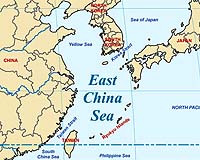 |
New Orleans, Louisiana (AFP) May 5, 2010 BP capped Wednesday one of three leaks hemorraging crude into the Gulf of Mexico, as emergency crews rushed to protect fragile shorelines and islands at risk from the spreading oil slick. Days of work off the coast of Louisiana with underwater submarines nearly a mile below the surface finally bore fruit as a valve was secured over the smallest of the three leaks and the flow shut off. The feat does not alter the overall amount of crude spilling into the sea and threatening the fragile US Gulf coast, but is significant nonetheless as the focus can now narrow on just two remaining leaks. "Working with two leaks is going to be a lot easier than working with three leaks. Progress is being made," US Coast Guard Petty Officer Brandon Blackwell told AFP. More than two weeks after the Deepwater Horizon rig exploded, the full impact of the disaster is being realized as a massive slick looms off the US Gulf coast, imperiling the livelihoods of shoreline communities. If estimates are correct, some 2.5 million gallons of crude have entered the sea since the BP-leased platform spectacularly sank on April 22, still ablaze more than two days after the initial blast that killed 11 workers. The riser pipe that had connected the rig to the wellhead now lies fractured on the seabed a mile below spewing out oil at a rate at some 5,000 barrels, or 210,000 gallons, a day. The spill has sparked fears of an environmental catastrophe as the region boasts 40 percent of US wetlands -- prime spawning waters for fish, shrimp and crabs and a major stop for migratory birds. But BP spokesman John Curry said teams hoped to turn the tide in the battle against the slick with the deployment of a five-story "dome" that could contain the main leak and funnel the oil up to a massive ship on the surface. "The collection system is on the boat," Curry told AFP. "It will be going out today. We hope to have that deployed by the end of the week. That system will contain the greater source of flow." With oil still rushing unabated from the ruptured offshore well, volunteers and others descended on the region to help stave off a looming environmental crisis from the huge oil patch. Pentagon officials authorized the use of additional National Guard troops to assist. As many as 6,000 in Louisiana can be mobilized, with 3,000 in Alabama, 2,500 in Florida and 6,000 in Mississippi. Government officials said an estimated 7,500 people were mobilizing to protect the shoreline and wildlife, as fears grew about the impact of the catastrophe. A sea turtle was spotted swimming through a massive oil slick about 25 kilometers (15 miles) south of Louisiana by officials from the National Wildlife Foundation. The group hired a boat from the port town of Venice and went out into the Gulf of Mexico through an outlet in the Mississippi River. Nobody on board was trained in animal rescue and they were forced to leave the obviously distressed turtle in the slick and simply report the coordinates to a hotline. "It was very upsetting," said Karla Raettig of Coastal Louisiana Restoration at the Federation. More than 600 animal species are threatened by the expanding oil slick in the Gulf of Mexico, officials say. Twelve shrimp trawlers and 10 official response boats frantically laid protective booms around some of the Chandeleur Islands -- a group of uninhabited prime marsh and wildlife area -- but initially failed to confirm any land impacts. In Florida, authorities were preparing for the impact of the oil slick if loop currents bring the pollution to the state's shores. Coast Guard officials said the mobilization was occurring as far away as Key West. "Although it is still too soon to predict if or how the Florida Keys may be impacted by the Deepwater Horizon spill, we are focused on preparing for whatever those impacts may be," said Captain Pat DeQuattro, sector commander at Coast Guard Sector Key West. On the coastal areas of Mississippi, Alabama and Louisiana, forecasters suggested that the bulk of the slick won't make landfall before the end of the week, officials said. AFP journalists on an overflight Tuesday of the Chandeleur Islands saw reddish brown streaks of oil and said light sheen appeared to be lapping the shore in certain places.
Share This Article With Planet Earth
Related Links Powering The World in the 21st Century at Energy-Daily.com
 China says chasing of Japanese boat "legitimate"
China says chasing of Japanese boat "legitimate"Beijing (AFP) May 5, 2010 China said Wednesday one of its inspection ships that chased down a Japanese ocean surveying vessel in the East China Sea had acted legitimately, state media reported. "China's position on the issues of the East China Sea and the Diaoyu islands is consistent and clear," foreign ministry spokeswoman Jiang Yu was quoted as saying by the China News Service. "China's Haijian ship was complet ... read more |
|
| The content herein, unless otherwise known to be public domain, are Copyright 1995-2010 - SpaceDaily. AFP and UPI Wire Stories are copyright Agence France-Presse and United Press International. ESA Portal Reports are copyright European Space Agency. All NASA sourced material is public domain. Additional copyrights may apply in whole or part to other bona fide parties. Advertising does not imply endorsement,agreement or approval of any opinions, statements or information provided by SpaceDaily on any Web page published or hosted by SpaceDaily. Privacy Statement |